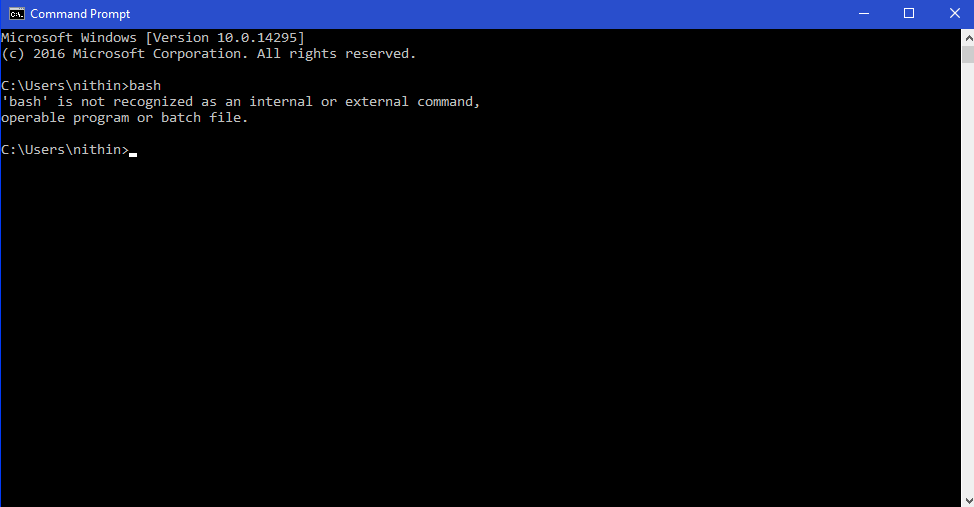Optimizing Power Management: A Comprehensive Guide to Creating a Detailed Battery Report in Windows 10

In the digital age, where our lives are increasingly intertwined with technology, the importance of efficient power management cannot be overstated. Whether you’re using a laptop for work, a tablet for entertainment, or a hybrid device for both, understanding your device’s battery health and usage patterns is essential for maximizing productivity and prolonging battery life. Fortunately, Windows 10 offers a powerful built-in tool that allows users to generate detailed battery reports, providing invaluable insights into battery performance, usage statistics, and power consumption. In this comprehensive guide, we’ll explore the process of creating a detailed battery report in Windows 10, delve into the insights provided by these reports, and offer practical tips for optimizing power management to enhance your computing experience.
Understanding Battery Reporting in Windows 10:
Windows 10’s battery reporting feature is powered by PowerCfg (Power Configuration), a command-line utility that provides detailed information about system power usage and battery health. By leveraging PowerCfg, users can generate comprehensive battery reports that offer insights into various aspects of battery performance, including charge capacity, usage history, and power efficiency metrics. These reports are invaluable tools for diagnosing power-related issues, optimizing power settings, and extending battery life on Windows 10 devices.
Key Features and Benefits:
Creating a detailed battery report in Windows 10 offers numerous benefits and key features, including:
- Comprehensive Data Analysis: Battery reports provide a wealth of information about battery health, charge cycles, capacity degradation, and power usage patterns, enabling users to gain a deeper understanding of their device’s battery performance.
- Diagnostic Insights: By analyzing the data in battery reports, users can identify potential issues affecting battery life, such as background processes, hardware malfunctions, or power-hungry applications, and take corrective actions to address them.
- Historical Tracking: Windows 10 allows users to generate battery reports for specific time periods, facilitating historical tracking of battery performance trends and usage patterns over time.
- Customization Options: Users can customize the content and format of battery reports to suit their preferences and information needs, ensuring that they get the most relevant insights for their devices.
- Optimization Recommendations: Battery reports often include recommendations for optimizing power management settings, such as adjusting screen brightness, enabling power-saving modes, or disabling unnecessary background processes, to maximize battery life and efficiency.
How to Create a Detailed Battery Report in Windows 10:
Generating a detailed battery report in Windows 10 is a straightforward process that involves a few simple steps:
- Open Command Prompt as Administrator: Right-click on the Start button and select “Command Prompt (Admin)” from the context menu to open Command Prompt with administrative privileges.
- Generate Battery Report: In the Command Prompt window, type the following command and press Enter:bash
powercfg /batteryreport /output "C:\battery_report.html"
This command instructs Windows 10 to generate a battery report and save it as an HTML file named “battery_report.html” in the root directory of the C: drive. You can specify a different location and filename if desired.
- Access the Battery Report: Once the command is executed, navigate to the specified location (e.g., C:\battery_report.html) using File Explorer to access the generated battery report.
- Review and Analyze the Report: Open the battery report file (battery_report.html) in a web browser to review the detailed information on battery health, usage statistics, and power efficiency metrics. Take note of any anomalies or areas for improvement that may be identified in the report.
Practical Tips for Battery Optimization:
Here are some practical tips for optimizing power management based on the insights gained from battery reports:
- Identify Power-Hungry Applications: Review the battery report to identify applications or processes consuming significant battery power, and consider limiting their usage or optimizing their settings to reduce power consumption.
- Adjust Power Settings: Fine-tune power settings in Windows 10, such as screen brightness, sleep settings, and power-saving modes, based on the insights from the battery report to maximize battery life without compromising performance.
- Monitor Background Processes: Keep an eye on background processes and services running on your device, and disable or uninstall unnecessary ones to minimize battery drain.
- Update Device Drivers: Ensure that device drivers, especially those for power management components, are up to date to optimize battery performance and compatibility with Windows 10.
- Practice Battery Maintenance: Follow best practices for battery maintenance, such as avoiding extreme temperatures, keeping the battery charged within optimal levels, and occasionally recalibrating the battery to maintain its health and longevity.
Conclusion:
Creating a detailed battery report in Windows 10 is a valuable tool for understanding and optimizing power management on laptops, tablets, and other mobile devices. By generating and analyzing battery reports, users can gain insights into battery health, usage patterns, and power efficiency, enabling them to make informed decisions to extend battery life and maximize productivity. Whether you’re a power user seeking to optimize performance or a casual user looking to make the most out of your device’s battery, leveraging the insights from battery reports in Windows 10 can help you achieve your goals. With its comprehensive data, diagnostic tools, and customization options, Windows 10 empowers users to take control of their device’s power management and ensure optimal battery performance in any situation.




